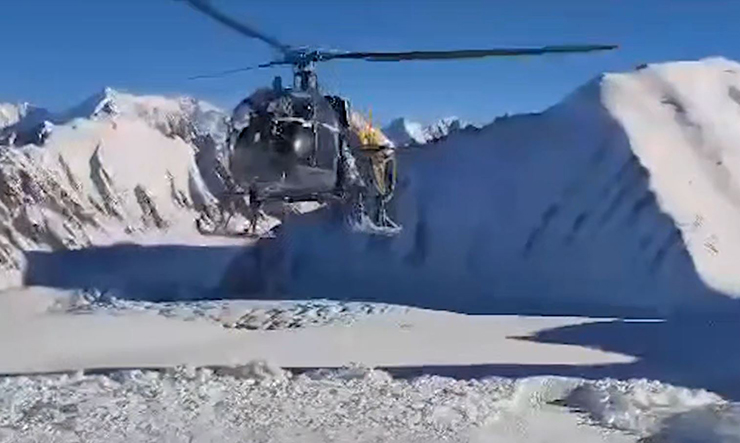
New Delhi. As the Indian Army commemorated 40 years since the commencement of its presence on the strategically vital Siachen Glacier, it marked a significant milestone as it has been a remarkable journey of technological progress and logistical advancements.
Operation Meghdoot was launched in 1984 to secure the Siachen Glacier in Jammu and Kashmir. The operation was unique as it involved the first assault on the world’s highest battlefield. The result was the Indian troops gaining control of the entire Siachen Glacier. The need for Operation Meghdoot arose due to Pakistan’s cartographic aggression in Ladakh, allowing foreign mountaineering expeditions in Siachen. Intelligence inputs about impending Pakistani military action prompted India to secure strategic heights on Siachen, deploying troops via airlifts and air-dropping supplies to high-altitude airfields.
Since then, significant efforts have been made to enhance infrastructure and habitat on the Siachen Glacier. Over the last four decades, notable advancements have been made. One being the improvement in mobile and data connectivity, with the introduction of VSAT (Very Small Aperture Terminal) technology, revolutionising communication on the glacier and providing troops with crucial data and internet connectivity.
Similarly, the introduction of heavy-lift helicopters and logistic drones has significantly improved the supply of essential resources to personnel stationed at isolated posts, especially during harsh winter conditions. This includes ensuring the availability of clothing, mountaineering equipment, and rations.
Focused on improving connectivity, recent initiatives have led to advancements in the supply chain ensuring that personnel stationed at forward posts in the Northern and Central Glaciers now have access to fresh rations and vegetables. Now, the Siachen Glacier boasts state-of-the-art medical infrastructure, including telemedicine nodes established by ISRO. These facilities provide critical medical support not only to troops but also to the local populace and tourists in the Nubra Valley.
Playing a crucial role in supporting Operation Meghdoot, the Indian Air Force (IAF) initially focused on transport and helicopter aircraft for troop and material transport. Gradually, the IAF expanded its role, deploying fighter aircraft like the Hunter, MiG-23s, and MiG-29s, operating from high-altitude airfields at Leh and Thoise. This expanded role included fighter sweeps and simulated strikes over the glacier, boosting morale and deterring adversaries.
The IAF inducted Cheetal helicopters, re-engineered for high-altitude operations in 2009. Later in 2013, IAF showcased its capabilities by landing a Lockheed Martin C-130J Super Hercules at Daulat Beg Oldie, the world’s highest airstrip near the line of actual control in Ladakh. Today, a variety of IAF aircraft, including Rafale, Su-30MKI, Chinook, Apache, and others, support Operation Meghdoot.
The IAF helicopters, operating in the highest battlefield globally, are the lifeline for Indian troops. They provide crucial support in emergencies, logistics supply, and evacuating the sick and wounded from the glacier. Showcasing the IAF’s commitment and skill in supporting the four-decade-old military operation on the Siachen Glacier, their operations set records in human endurance, flying, and technical proficiency.
The Indian Army acknowledged the sacrifices of its brave soldiers and the immortal spirit characterised its long deployment in Siachen in a press release. The celebration by the Indian Army of its 40 years of its presence on the Siachen Glacier, reflects not only on the progress made in technological advancements and logistical improvements but also on the sacrifices and dedication of its personnel.
Ensuring the well-being of its troops in one of the world’s most challenging terrains, ‘Operation Meghdoot’ stands as a testament to India’s commitment to safeguarding its borders.















